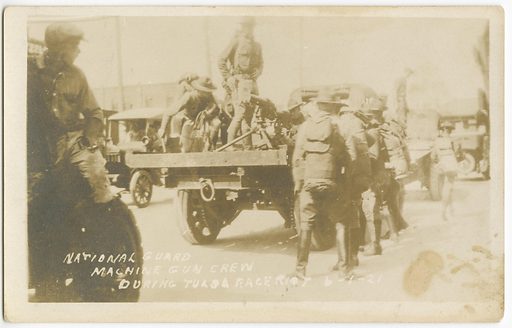Tw: lynching, rape
Fear, lies and White supremacy. What do these words have in common? The unsolicited destruction of innocent Black families, Black businesses, Black schools, Black churches and whole Black communities. What remained from this destruction? Generational trauma, governments that purposefully underestimate the destruction and intentional under coverage in our news and educational systems.
The destruction of Black communities was not a one-time event. Communities in Oklahoma, North Carolina, New York, Illinois, Washington, D.C., Georgia, Florida and Tennessee were all terrorized by angry, uncontrollable white mobs. Many communities were burned down, ran-off, and most importantly, killed.
Angry yet?
Black Wall Street, Tusla, Oklahoma
According to CNBC, Black Wall Street in Tulsa, Oklahoma was, at one point, one of the wealthiest Black communities in the United States. All that ended in a matter of 48 hours.
Between May 31 and June 1, 1921, white residents crossed the railroad tracks that separated the prosperous Black community from the neighboring white community. What they did next was horrifying. “Thirty-five blocks were systematically looted and burned, destroying 190 businesses and leaving 10,000 people homeless.” There was over $31 million dollars in damages.
The aftermath of this massacre is almost as bad, if not worse. The two white newspapers in Tulsa, Oklahoma purposefully did not cover the tragic event for decades. Those who wanted to research the massacre lives and careers were threatened. Tulsa’s police department ordered all photographs of the massacre to be confiscated. Newspapers deemed the event as a “riot,” and blamed the Black community for it.
The massacre was kept quiet within the Black community for decades. Families were scared that if they spoke up, their lives would be destroyed all over again.
“The historical trauma is real and that trauma lingers, especially because there is no justice, no accountability and no reparation or monetary compensation,” said Alicia Odewale, an archaeologist at the University of Tulsa.
Black Wall Street, Durham, North Carolina
According to Duke Chronicle, the Black Wall Street in Durham, North Carolina was a “vibrant and successful variety of
Black-owned businesses.” The city was nationally known for promoting entrepreneurship within the Black community. Because of its’ successes, Durham was known as the “capital of the Black middle class in America.”
The destruction of Black Wall Street in Durham, North Carolina was not as violent as the destruction of the original Black Wall Street in Tulsa, Oklahoma rather it was a calculated move. At the beginning of desegregation, Black owned businesses had difficulty competing with their white counterparts. The government took advantage of this situation.
A federal government initiative, called Urban Renewal, was set on redeveloping the “‘blighted’ or ‘slum’ neighborhoods”. This resulted in the construction of the Durham Freeway 147. This highway ran right through the Black Wall Street community in Durham. It destroyed the Black business district and harmed “more than 100 Black businesses and displaced hundreds of Black families.” The area where Black Wall Street once was and now harbors hotels and apartments.
Wilmington Massacre, Wilmington, North Carolina
The only coup d’état on American soil, the Wilmington Massacre was prompted by exaggerated journalism and White supremacists who were afraid of “Negro domination.” Before the massacre, according to the Zinn Education Project, three out of the ten aldermen were African American. Black people were seen
working in the police force, as firemen and even magistrates.
White supremacists did not like such an integrated society and sought to end it. Former Confederate Col. Alfred Waddell gave a speech where he encouraged lynching to white supremacists as a method “to protect [the white] woman’s dearest possesion from the ravening human beast.” In response. Alex Manly, an African American and editor of Wilmington’s Black newspaper, the Daily Record, wrote an article opposing the white supremacists.
Manly spoke out against the lynching and the hypocrisy of the speech. He pointed out the white man describing Black men as “big burly, black brutes” when in all actuality, white men were the ones who regularly raped Black women. He added that “some relations between races were consensual.” This led to a mob of 2000 armed white men burning the Daily Record to the ground on Nov. 10, 1898.
Soon after, an altercation took place in a saloon between Black and white men that resulted in gunfire. The Wilmington Light Infantry, the White Government Union and the Red Shirts (part of the KKK) stormed into Black neighborhoods. They killed and destroyed the community.
While shots were being fired, supremacists democrats used this time to overthrow the local government. They then placed a white supremacist sympathizer in the republican alderman’s seat. Afterwards, thousands of Black citizens fled.
St. Louis Race Riots, St Louis, Illinois
In 1916 and 1917, the Black Migration brought thousands of African Americans from the South to East St. Louis, Illinois. White residents and the city’s political leaders tried to stop this by “prohibiting
the railroads from transporting Black people to the region.”
When these efforts failed, white residents resorted to violence. Between July 2 and July 5, 1917, 200 African Americans were “shot, hanged, beaten to death or burned alive after being driven into burning buildings.” Afterwards, 6000 African Americans fled the city, and only 20 members of the white mob went to prison for their actions.
Rosewood Massacre, Rosewood, Florida
Rosewood was a thriving Black community in Levy County, Florida. The destruction of this community started with a very common lie of the time: a white woman accusing a Black man of assaulting her.
What resulted caused trauma in the Black generations to come. In Jan. 1923, an angry white mob stormed into the Black community and burned it to the ground. Black families lost their land and their possessions. Some hid in a nearby swamp or took refuge in the only white household in the town. Families were pushed into poverty after they lost their family wealth.
The story of the Rosewood Massacre did not surface until the 1990s. Stephen Hanlon, a lawyer, was tasked with taking on tough cases that would have gone untried for years. What he uncovered, along with the massacre, were years of generational trauma.
Black families kept what happened to them all those years ago a secret, intentionally choosing to not tell their children. But with the help of Stephen Hanlon, seventy years after the massacre, the case was brought before the Florida Legislature in 1993…and won.
The families of the victims were paid in reparations. This was the first time in American history that Black people were paid reparations for racial violence. However, the survivors did not care for the reparations. They just wanted their story and history told.
New Black Wall Street Market, Stonecrest, Georgia
These were not the only communities that were destroyed out of fear and white supremacy. However, even after all this pain and destruction, six Black communities and families persevered.
Established 100 years after the destruction of Black Wall Street in Tulsa, Oklahoma, the New Black Wall Street Market opened in Georgia in Oct. 2021. Their mission is to “increase the size and number of minority and women-owned businesses throughout the United States and Globally.” NBWSM contains over 100 shops and restaurants where visitors can expect “family fun, entertainment, retail, gourmet grocery shopping and fine dining.” It is now a major tourist destination.
After all the killings and burnings, Black people still found a way to persevere. We will not stop until we achieve what we know we deserve.
Originally Published 2/23/23




